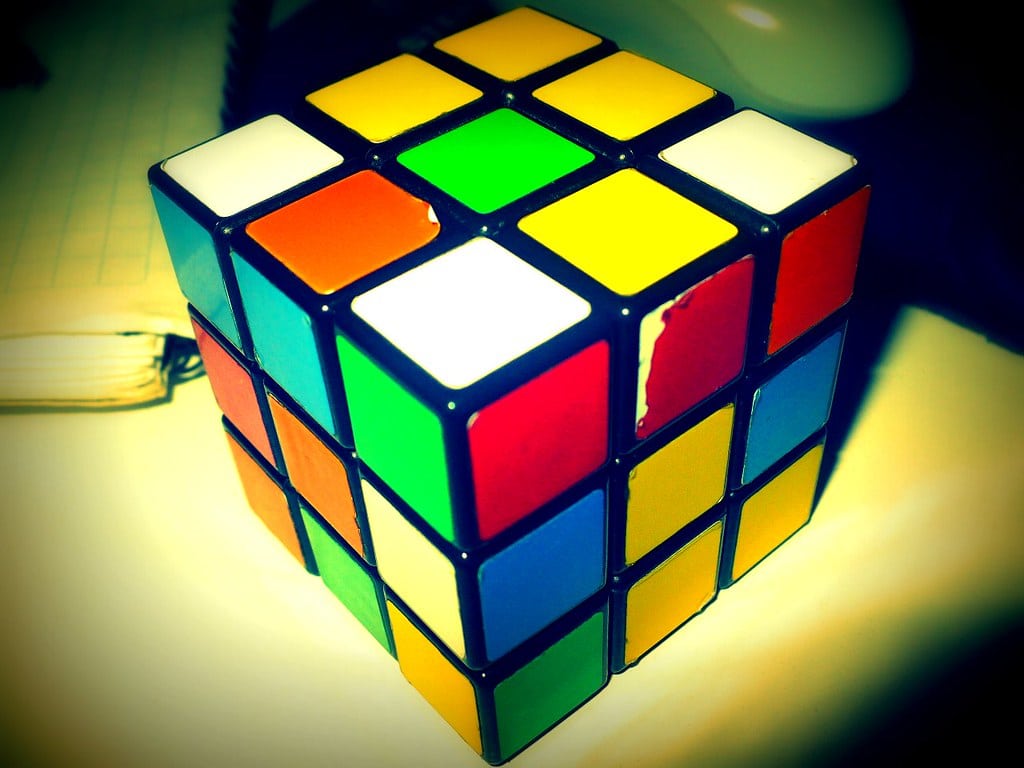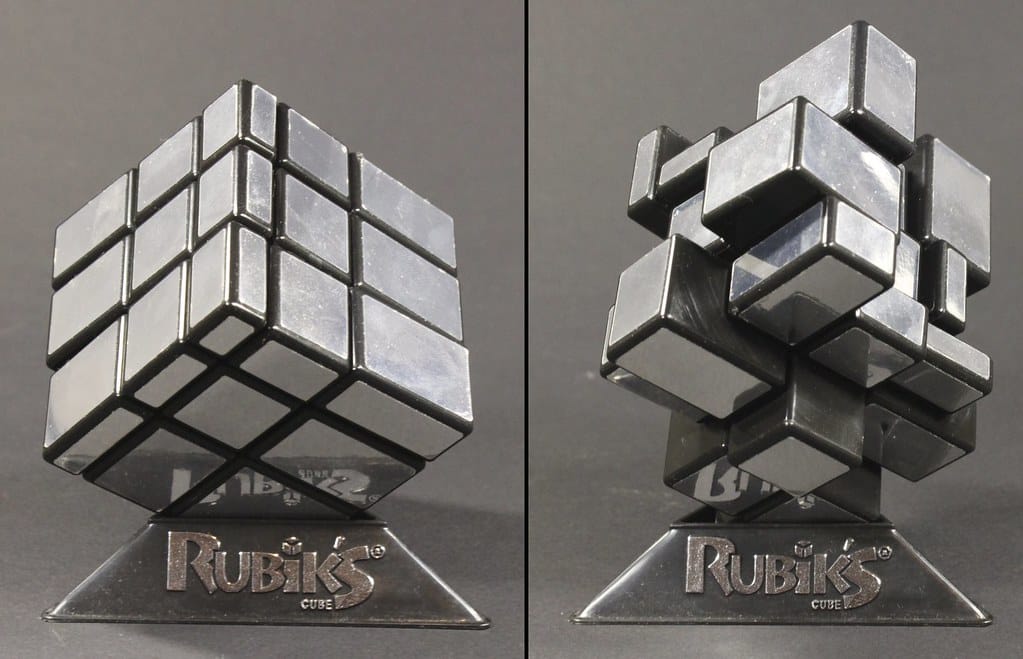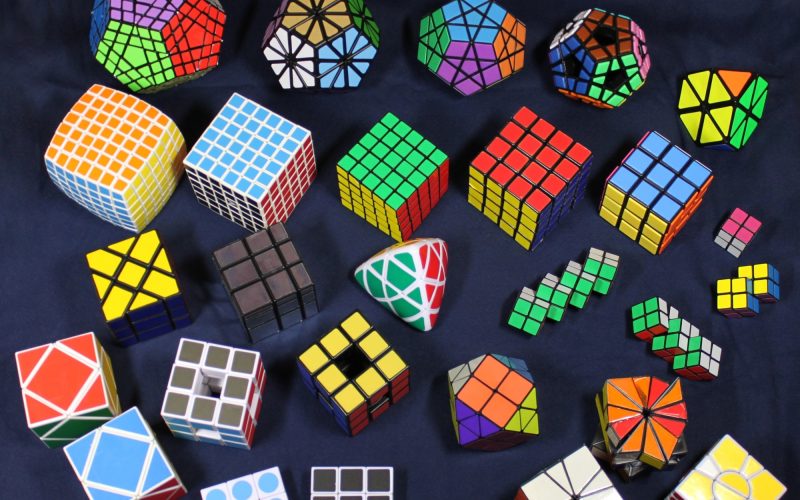Because of its peculiar characteristics, the Rubik’s cube is popular in mechanics. Several scholars have used this cube in scientific research and the creation of advanced technology.
But, this cube is popular among scholars and a child’s favorite, one that many played with while growing up.
A Rubik’s cube comprises little cubes with different colors, like red, blue, yellow, orange, white, and green.
The most enticing aspect of this cube is the challenges it presents. It forces you to concentrate and align the same colors in the same dimension.
Different Rubik’s cubes are available on the market these days. However, not everyone knows that it comes in different faces.
You’ve come to the right place if you fall into this category. This article will review the types of Rubik’s cubes and their differences.
Origin of the Rubik’s Cube
Rubik’s three-dimensional combination puzzle, often known as the Magic Cube, is an invention of the Hungarian sculptor and architect Professor Ernő Rubik.
Because of its one-of-a-kind characteristics, this innovation piqued people’s interest all over the world and had a profound impact on humanity.
Rubik invented this cube as a teaching tool to aid his students’ understanding of three-dimensional objects.
However, after unscrambling his cube, he found it difficult to return it to its original structure.
Rubik discovered at this point that he had invented a puzzle and shared his discovery with the world.
When Rubik invented the three-order cube, it looked like a sphere with several constraints between the components to achieve a specific rotation.
It was then modified to have sharp corners and become a cubic shape since the vertex did not impact the cube’s function.
Rubik’s cube grew in popularity and soon became one of the top inventions of the 20th century.
It received a special award for the greatest toy in Germany, the United Kingdom, France, and the United States of America.
Different Types of Rubik’s Cube
When Rubik’s cube puzzle concept was developed, it enabled the development of many shapes and sizes of cubes.
This is because several constructions did not affect the original idea but created a unique difficulty level.
As a result, different types of Rubik’s cubes are now available in the market. Below are several types of Rubik’s cubes and their characteristics.
1. 2×2 Rubik’s Cube

This cube is sometimes called a pocket cube or a micro cube because it is smaller and more portable than regular cubes.
So you can easily slide them into your pockets and solve them anytime and anywhere. Some people believe that solving a small Rubik’s cube is difficult, and this is because there are more than 3.5 million possible combinations.
As a result, you might grow weary of solving it. But, while some might find it a stressful activity, others prefer it because of its challenging nature.
A 2X2 cube has several benefits. Solving it will force you to master specific puzzle-solving approaches. The strategies and techniques will make it easier to win the game in the long run.
Such activities push your brain past several boundaries and help you develop problem-solving skills.
2. 3×3 Rubik’s Cube

The classic 3X3 is the most common type of Rubik’s cube that you can find in anyone’s collection.
This remodified Erno Rubik’s original cube, which was so popular that almost everyone wanted one.
More than 43 million possible permutations make it easier to solve than the 2X2 Rubik’s cube.
Still, solving it in a few seconds requires much practice. Despite this, the world has recorded someone solving this extraordinary puzzle in less than 4 seconds.
The 3X3 has nine faces on each side of this three-layer cube, allowing you to make beautiful designs.
They also come in different colors and combinations, making them attractive to younger people.
3. Mirror Cube

The mirror cube is a Rubik’s cube, and each piece has its distinct shape and size. The only distinction between each piece’s position is its size because all parts are the same color, either silver or gold.
Because of the cube’s unusual design, solving it can be challenging because there is no color difference to anticipate.
Instead, you must manually select which piece goes where before moving them. However, this same feature makes it easy to solve this puzzle blindfolded.
The reason is that you only need to know the structure of each shape instead of the color variation.
When you solve it, the Mirror cube looks like a standard cube. But when you scramble it, the overall appearance of the mirror cube changes due to the unequal size of each piece.
When selecting a mirror cube, consider factors such as the size and color of the item. You must also consider the difficulty of solving the cube as they have different complexities.
If you’re unfamiliar with the cube, start with a simple one to better understand the approaches and strategies. Afterward, you can proceed to acquire more complex versions.
4. Skewb

Skewb is a cube puzzle with corners that turn in different directions. It mimics the traditional Rubik’s cube because it has eight corners and six fixed centers, which is the normal standard.
Although it appears complex at first glance, it is simpler to solve than a 2X2 cube.
5. Meganminx
Megaminx is a dodecahedron-shaped puzzle that is reminiscent of the Rubik’s cube.
Initially, it appears to be an extremely difficult problem to solve. However, if you have an idea of solving the 3X3 cube, you can solve the Megaminx.
Megaminx also appears in several variations. In other words, you can find different Meganminx types and sizes.
Kilominx is the 2X2 variant, and the larger sizes of dodecahedrons are Gigaminx, Teraminx, Petaminx, Zettaminx, and Yottaminx.
These larger variants do not differ much from the standard magic cube. However, they are more complex to unscramble than their smaller counterparts.
6. Square 1
Square-1 is one of the different types of Rubik’s cube, simply a work of art. The cube has three layers, each of which has a distinct shape.
Once you complete the puzzle, it transforms into a bizarre yet unique structure. The design also makes it more challenging than the regular cube.
7. 3x3x3 Mastermorphix
Another unique variation of the Rubik’s cube is the 3x3x3 Mastermorphix. It’s a triangle-shaped puzzle in two variations, one with color and one without.
This piece of artwork has four triangle-shaped faces, each with a single centerpiece. The four triangles are joined at the center, which serves as its focal point.
This cube differs significantly from the standard 3×3 cube in size and shape. The centerpieces can rotate 180 degrees, though the center is not a regular square.
Only one corner piece can turn completely, which never happens with a standard Rubik’s cube.
8. 3x3x4
3x3x4 is a standard 3X3 cube with an extra layer. Hence, it functions the same way as the classic 3X3 and has the same color combination as the 3X3.
However, despite the similarities, the solution approach is different. The 3X4 layers cannot rotate 90 degrees as the regular 3X3 layers with this cube.
Instead, they can only turn through half of their length. This function doesn’t make it less challenging.
9. Software Cubes
With the introduction of technology, there are now software cubes that you solve with your phone.
These accessible digital cubes have a confusing array of moves, twists, colors, sizes, and shapes. However, they are still experiments and are not common.
10. 3D Cubes
These cubes are rare, but several 3D printers have been experimenting with them.
They also believe that 3D cubes will open the way to a limitless number of puzzle permutations, improve the user experience, and make solving puzzles more exciting.
The rexoctahedron3 and the current world record holder, the 22 x 22 Rubik’s Cube, are two well-known 3D puzzle designs.
Conclusion
The Rubik’s cube inspires a wide range of physical, digital, and twisting puzzles. With its popularity, this cube will only evolve and serve better purposes in the future.








